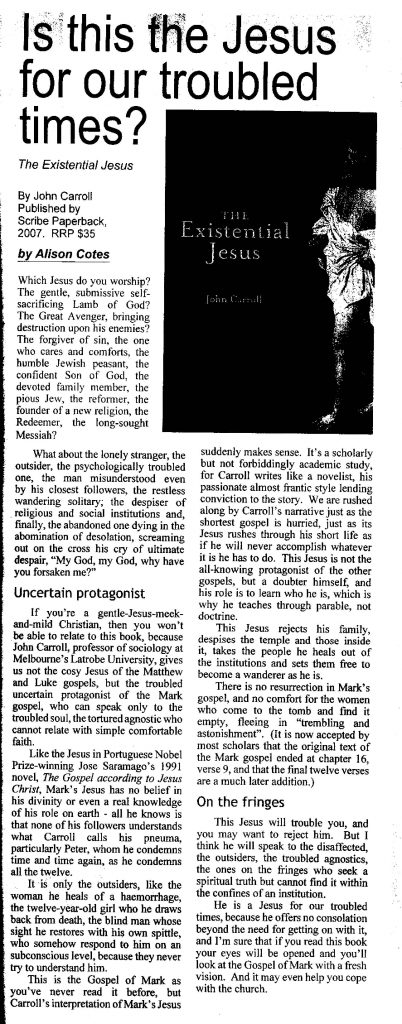This is going to be a multi-part reply to a most extraordinary chapter. In a bizarre way that Bauckham would not appreciate, B will find himself in league with his post-modernist devil against the intellectual values of the Enlightenment. The main differences between the two are firstly that B will often be arguing against a straw-man Enlightenment, and secondly that he will subtly shift definitions and contextual meanings of his terms as he proceeds. Continue reading “Bauckham’s Jesus and the Eyewitnesses. Chapter 18a”
2007-03-22
Bauckham’s Jesus and the Eyewitnesses. Chapter 18a

